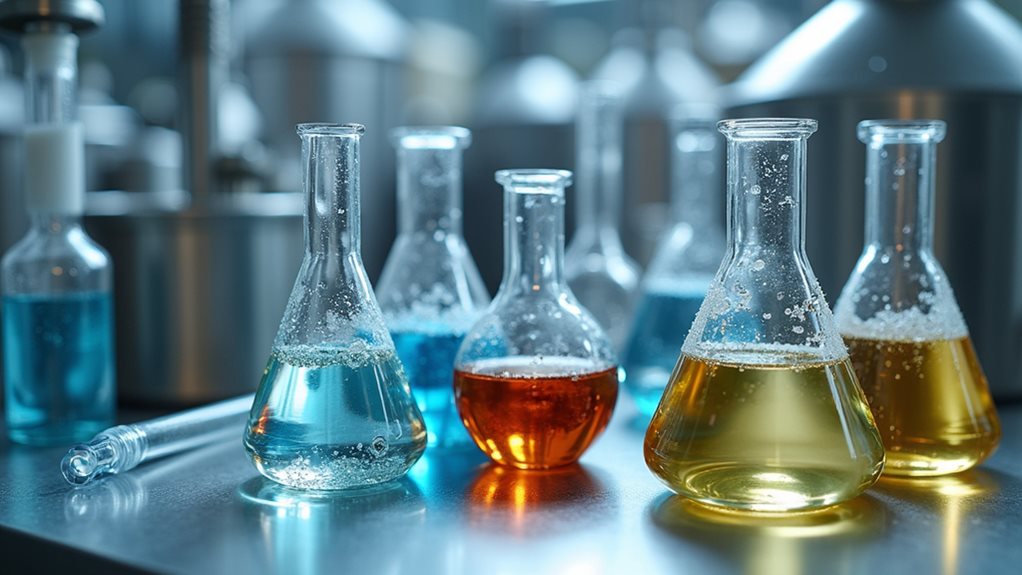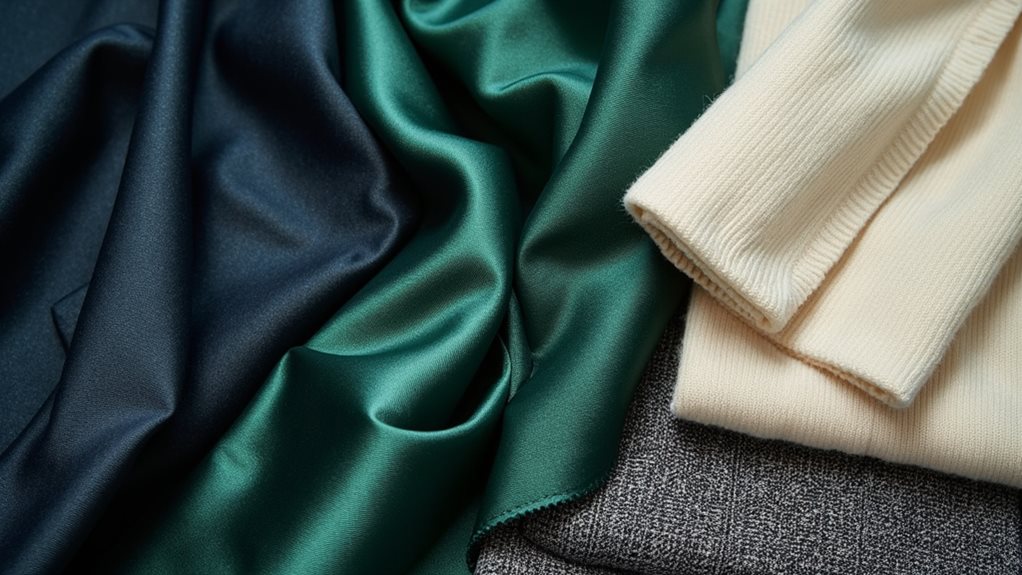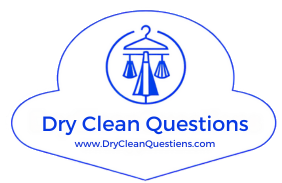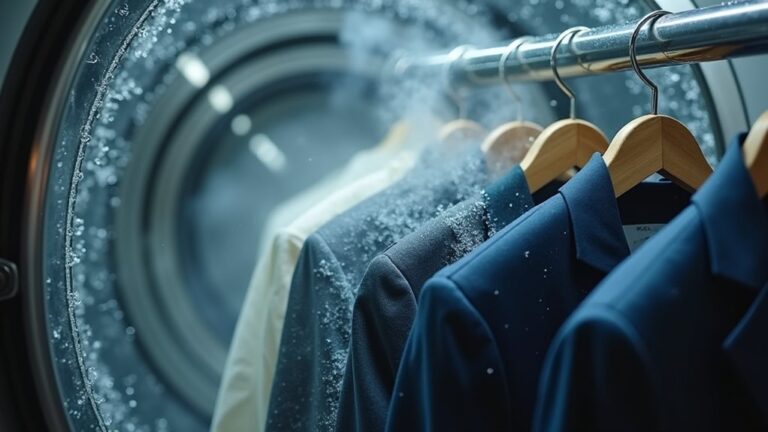Dry cleaning services use chemical solvents instead of water to clean your delicate garments, preserving fabrics like silk, wool, and cashmere that would shrink or lose their shape in regular washing machines. These professionals tackle oil-based stains that your home washer can’t handle, while maintaining the structure of suits and formal wear through specialized multi-stage processes. Understanding when you’ll need these services can save your favorite pieces from damage and extend their lifespan considerably.
Understanding the Dry Cleaning Process and How It Works
When I first dropped off my favorite silk blouse at the dry cleaner’s, I honestly thought they just threw it in some fancy washing machine and called it a day – boy, was I wrong!
The dry cleaning process is actually a sophisticated multi-stage operation that’ll blow your mind. Professional dry cleaners start with inspection and tagging, then move to pre-spotting stubborn stains before your garments and fabrics enter specialized cleaning machines that use organic solvents instead of water.
While traditional cleaners rely on perchloroethylene, many now offer eco-friendly solvents that’re gentler on both delicate fabrics and the environment.
After the cleaning cycle, there’s another inspection to remove stains completely, followed by pressing and steaming for that crisp, pristine finish you love.
This process is especially effective for structured garments that could shrink, lose shape, or become damaged when exposed to water-based washing methods.
Types of Solvents Used in Professional Dry Cleaning

Although I’d never given much thought to what actually happens inside those mysterious dry cleaning machines, discovering the different types of solvents used completely changed how I choose where to take my clothes – and honestly, it should influence your decisions too!
Traditional dry cleaning solvents like perchloroethylene (perc) are incredibly effective at removing stubborn stains, but they’re classified as potential carcinogens, which made me rethink my cleaning choices.
Learning that my go-to dry cleaner used potential carcinogens was the wake-up call I needed to prioritize safer cleaning options.
Thankfully, eco-friendly alternatives exist, including liquid carbon dioxide, synthetic petroleum hydrocarbon solvents, and siloxane (Green Earth), which breaks down into harmless components.
Modern facilities now employ closed-loop systems and proper ventilation to minimize chemical exposure to both workers and customers during the cleaning process.
With environmental protection agencies phasing out perc by 2024, asking your cleaner about their cleaning process and requesting safe alternatives isn’t just smart – it’s crucial for protecting both your health and our planet!
Benefits of Dry Cleaning for Different Fabric Types

Now that you understand what solvents are actually cleaning your clothes, let’s talk about why certain fabrics practically beg for the dry cleaning treatment – and trust me, I learned this lesson the hard way after ruining my favorite cashmere sweater in a misguided attempt to “save money” with home washing!
Professional dry cleaning services offer incredible benefits of dry cleaning that’ll keep your delicate fabrics looking pristine:
- Silk, wool, and cashmere stay vibrant – the gentle cleaning process prevents shrinkage and fading
- Oil-based stains disappear effortlessly – something water-based washing simply can’t achieve
- Leather and suede maintain texture without water damage risks
- “Dry clean only” garments preserve integrity exactly as manufacturers intended
- Extended garment lifespan means you’ll actually save money long-term
Garments with special construction features like structured blazers, suits with interfacing, or beaded items are particularly vulnerable to damage from conventional washing methods and require professional care to maintain their shape and prevent deterioration.
Your clean clothes deserve professional cleaning that protects your investment!
When to Choose Dry Cleaning Over Traditional Washing

Since I’ve spent countless hours standing in my laundry room, staring at care labels like they’re written in ancient hieroglyphics, I’ve developed a pretty reliable system for deciding when your clothes deserve the VIP treatment of professional dry cleaning versus the everyday wash-and-tumble routine.
Here’s my golden rule: if it’s delicate fabrics like silk, wool, or cashmere, skip traditional washing entirely because water can transform your favorite sweater into doll clothes faster than you can say “shrinkage.”
Oil-based stains are another automatic ticket to the dry cleaner, since the specialized cleaning process handles what your home washer simply can’t tackle.
Designer garments and formal wear also benefit from professional care for quality preservation, guaranteeing your investment pieces maintain their shape and elegance through countless wears.
Structured clothing like suits and blazers need dry cleaning to maintain their professional construction since washing machines can distort their carefully tailored silhouette.
Selecting the Right Dry Cleaning Service Provider

After years of trial and error that included one unfortunate incident where my favorite blazer came back looking like it had been through a wrestling match with a steamroller, I’ve learned that choosing the right dry cleaning service requires the same careful consideration you’d give to selecting a babysitter for your kids.
Here’s what I’ve discovered makes all the difference:
- Check their expertise with fabric types – especially delicate materials like silk and wool that need specialized treatments.
- Read customer reviews thoroughly – other people’s stain removal horror stories will save you heartache.
- Ask about eco-friendly solvents – your health and garment care shouldn’t involve harsh chemicals.
- Inquire about pickup and delivery options – convenience matters when life gets busy.
- Verify they offer alterations – one-stop shopping saves time and guarantees consistency.
Look for cleaners that are certified green or offer alternative methods like wet cleaning and CO2 cleaning, as these options provide safer cleaning without compromising quality.




